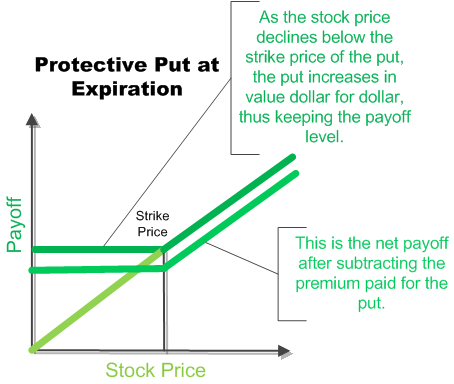Contents
An intangible asset can be considered indefinite or definite, like a legal agreement or contract. Additionally, financial assets such as stocks and bonds, which derive their value from contractual claims, are considered tangible assets. Historical cost is the total cost of the asset, including purchase price and any other cost incurred to get the asset ready for use, such as installation. You will find this item in many financial statements, whose explanation is entirely missing.
Gross assets are 1,01,000, fictitious assets 350 are included in the gross assets. Equity capital is 4,500 equity shares of 10 each fully paid. Transfer to reserves is 10% preference dividend is payable.
Net Tangible AssetsNet Tangible Assets is the value derived from the company’s total assets minus all intangible assets. Net Tangible Assets per share is calculated by dividing the net assets by the outstanding number of equity shares. Changes observed in long-term assets on a companies balance sheet can be a sign of capital investment or liquidation.

Account ReceivablesAccounts receivables is the money owed to a business by clients for which the business has given services or delivered a product but has not yet collected payment. They are categorized as current assets on the balance sheet as the payments expected within a year. Examples include oil & gas, automobiles, real estate, metals & mining.
What Is an Intangible Asset?
Is the most important financial document for an investor where assets are divided into various blocks for its easy understanding and simplified research. E.g., an investor can easily perform various ratio-analysis if assets are properly categorized. These assets have an economic value derived from Earth and are used up over time. A tangible asset is an asset that has a finite, transactional monetary value and usually a physical form.
Below is a portion of Exxon Mobil Corporation’sbalance sheet as of September 30, 2018. Chris B. Murphy is an editor and financial writer with more than 15 years of experience covering banking and the financial markets. Statements in order to assess its condition and performance. Claims that come due more than one year after the date of the balance sheet.
On the other hand, an undisclosed asset is one that cannot be separated from the company. The price-to-book (P/B) ratio evaluates a firm’s market value relative to its book value. This article has been a guide to Assets in Accounting Types. You may learn more about Accounting from the following articles.
If the excess purchase price cannot be attributed to patents, brands, copyrights, or other intangible assets, it is recorded as Goodwill. Some intangible assets have a limited life, and others have an infinite life, such as goodwill. Finite-living intangible assets are amortized (reduce or pay off with regular payments) throughout their lifetime, and an amortization expense is recorded on the income statement. In comparison, an indefinite intangible asset is checked for loss at least annually, and the cost of impairment, if any, is recorded in the income statement during the loss period. Intangible assets are assets that have no physical form, i.e., you cannot touch them. However, businesses consider them as valuable resources.
If a company is investing in its long-term growth, it will use revenues to make more asset purchases designed to drive earnings in the long-run. Long-term assets are reported on the balance sheet and are usually recorded at the price at which they were purchased, and so do not always reflect the current value of the asset. Long-term assets can be contrasted with current assets, which can be conveniently sold, consumed, used, or exhausted through standard business operations with one year. For example, understanding which assets are current assets and which are fixed assets is important in understanding the net working capital of a company.
It is based on the accounting equation that states that the sum of the total liabilities and the owner’s capital equals the total assets of the company. The Balance SheetA balance sheet is one of the financial statements of a company that presents the shareholders’ equity, liabilities, and assets of the company at a specific point in time. For example, a business may create a mailing list of clients or establish a patent. If a business creates an intangible asset, it can write off the expenses from the process, such as filing the patent application, hiring a lawyer, and paying other related costs.
the long term assets that have no physical existence but are right that have value is known as
Because of this, when a company is purchased, often the purchase price is above the book valueof assets on the balance sheet. The purchasing company records the premium paid as an intangible asset on its balance sheet. Intangible assets are those assets that do not have a physical presence.
Depreciation is an accounting convention that allows companies to spend a portion of their long-lived operating assets to be used in the current year. It is a non-cash expense that increases net income but also helps to match revenue with expenses in the period in which they are incurred. Intangible assets only appear on the balance sheet if they have been acquired. This type of accounting asset is not meant to be applied in day-to-day business operations but is accumulated as future investments or contingent situations. I.e., these assets generate income but have negligible participation in the basic functionality of a business.
- Historical cost is the total cost of the asset, including purchase price and any other cost incurred to get the asset ready for use, such as installation.
- In the income statement, profit or loss is recorded to the degree of difference between the sale proceeds and the carrying value of the asset.
- Capital assets, such as plant, and equipment (PP&E), are included in long-lived assets, excluding the portion specified for depreciation in the current year.
- Such grouping of the assets is done based on the common characteristics possessed by them.
- Would not affect the equality of the fundamental accounting equation.
Prepaid ExpensesPrepaid expenses refer to advance payments made by a firm whose benefits are acquired in the future. Payment for the goods is made in the current accounting period, but the delivery is received in the upcoming accounting period. Current Assets is an account on a balance sheet that represents the value of all assets that could be converted into cash within one year.
The Cost of Long-Term Assets
Long-term assets can be expensive and require large amounts of capital that can drain a company’s cash or increase its debt. A limitation with analyzing a company’s long-term assets is that investors often will not see their benefits for a long time, perhaps years to come. Investors are left to trust the management team’s ability to map out the future of the company and allocate capital effectively.

They can be physical, tangible goods, such as vehicles, real estate, computers, office furniture, and other fixtures, or intangible items, such as intellectual property. An asset is considered a tangible asset when it is an economic resource that has physical substance—it can be seen and touched. Tangible assets can be either short term, such as inventory and supplies, or long term, such as land, buildings, and equipment.
Types of Assets
Classification of assets is based on the existence of assets in physical form, or it lacks physical substance. Under this approach, an asset is reported at the Fair to value less any accumulated depreciation. If initial Revaluation results in a loss, the initial loss is recognized in the Income Statement. Any subsequent Revaluation gain would be recognized in the Income Statement to the extent of the previously reported loss.
Current assets will include items such as cash, inventories, andaccounts receivables. Off-balance sheet assets are assets that don’t appear on the balance sheet. OBS assets can be used to shelter financial statements from asset ownership and related debt. Common OBS assets include accounts receivable, leaseback agreements, and operating leases. Balance SheetA balance sheet is one of the financial statements of a company that presents the shareholders’ equity, liabilities, and assets of the company at a specific point in time.
List of Non-Current Assets (Examples)
Investopedia requires writers to use primary sources to support their work. These include white papers, government data, original reporting, and interviews with industry experts. We also reference original research from other reputable publishers where appropriate. You can learn more about the standards we follow in producing accurate, unbiased content in oureditorial policy. Drug companies invest billions of dollars in R&D researching new drugs, but only a few come to market and are profitable. Long-term investments such as stocks and bonds or real estate, or investments made in other companies.
When one company buys another company, it buys more than just assets on a balance sheet. It’s also buying some intangibles, like the quality of the employees and client the long term assets that have no physical existence base, reputation, or brand name. Therefore, it implies that the firm purchasing another business pays more than the fair market value of the business assets.
Which inventory moves through a firm and is turned into sales. The Structured Query Language comprises several different data types that allow it to store different types of information… Course Hero is not sponsored or endorsed by any college or university. Would not affect the equality of the fundamental accounting equation. A charge created not on specific assets but generally on all assets is known as………….
Derecognition of an asset occurswhenever an asset is disposed of or is not expected to provide any future benefitsfrom either its use or disposal. As a result, the asset is removed from the financial statements. Disposal of a long-term operating asset is affected by selling it, exchanging it, or https://1investing.in/ abandoning it. Non-Current Assets Plant, Property, and Equipment (PP&E)PP&E PP&E is one of the core non-current assets found on the balance sheet. PP&E is impacted by Capex, Depreciation, and Acquisitions/Dispositions of fixed assets. A business asset is an item of value owned by a company.
Accumulated DepreciationThe accumulated depreciation of an asset is the amount of cumulative depreciation charged on the asset from its purchase date until the reporting date. It is a contra-account, the difference between the asset’s purchase price and its carrying value on the balance sheet. Are recognized only when bought from an external entity, not if they are developed internally. Property, plant, and equipment (PP&E) are long-term assets vital to business operations and not easily converted into cash. Capital assets, such as plant, and equipment (PP&E), are included in long-term assets, except for the portion designated to be depreciated in the current year.